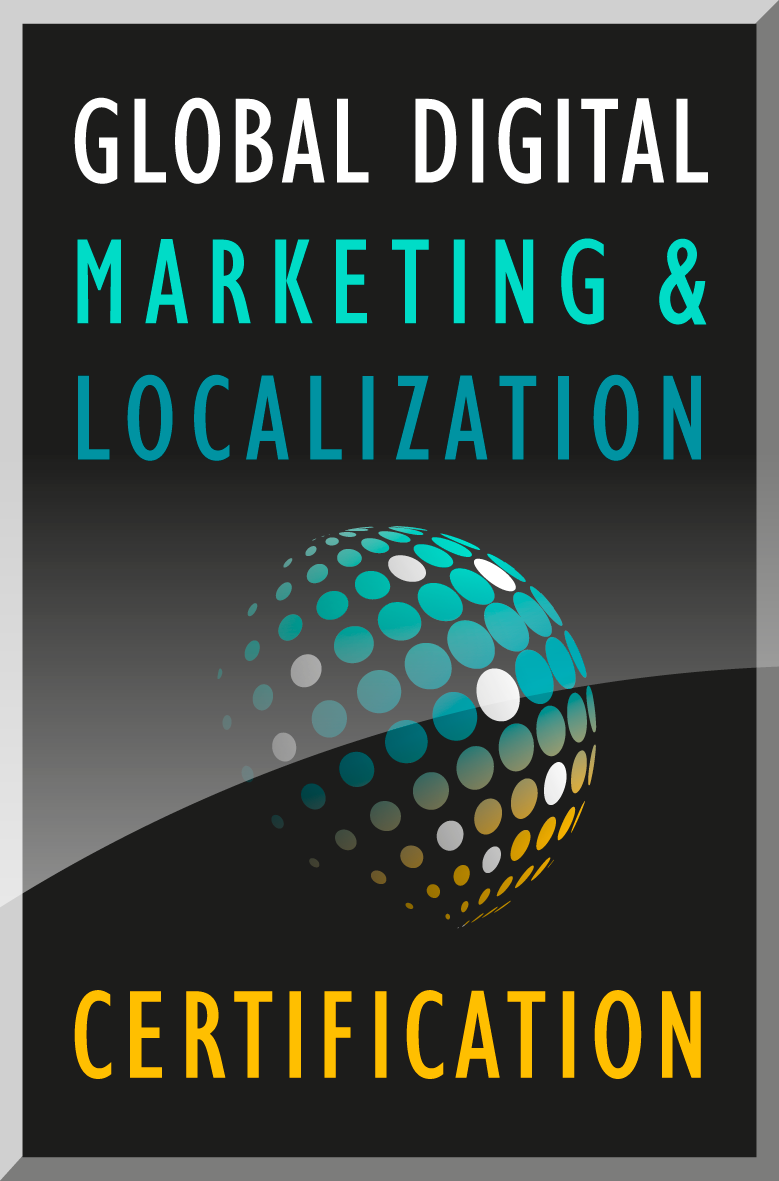Standardizing or Localizing Marketing Mix In the Italian Market

This is a paper presented by Valeria Leo, a graduate of the Global Digital Marketing and Localization (GDMLC) program. This paper presents the work being produced by students of The Localization Institute’s programs. The contents of this Paper are presented to create discussion in the global marketing industry on this topic; the contents of this paper are not to be considered an adopted standard of any kind. This does not represent the official position of Brand2Global Conference, The Localization Institute, or the author’s organization.
Introduction
Every major global company continually faces the decision whether to standardize its international branding strategy or customize branding tactics to meet local preferences. While some level of consistency is essential to the brand’s success, a certain amount of freedom to react to the local environment can benefit the brand as a whole. Every company must balance these opposing strategies and arrive at a point that they feel maximizes their brand’s potential.
This case study compares the two different marketing strategies adopted in the Italian market by Nestlé Nespresso and Domino’s Pizza, two large companies operating in food & beverage sector, the former, and in the pizza restaurant sector, the latter. As we know, Italy is well-known for its coffee and pizza culture. Yet these two global brands have managed to penetrate their products through two completely opposite marketing strategies in this critical market. Which of the two approaches has reported more results and success?
To standardize or to localize? – That is the question!
When entering international markets, firms have to adapt or standardize their marketing mix, which can be explained as the particular combination of marketing variables offered to a market at any point in time. In fact, the definition of marketing mix is based on four basic but fundamental pillars, the so called 4Ps of marketing mix: Product, Price, Place (distribution), Promotion.
The question of what strategy chooses – standardization or adaptation – is a matter of debate since the beginning of the 1980s. In reality, almost none marketing mix is not only adapted or only standardized. According to Keegan and Green (1999): “the essence of global marketing is finding the balance between a standardized (extension) approach to the marketing mix and a localized (adaption) approach that is responsive to country or regional differences.” Hence, a fundamental decision that managers have to make regarding their global marketing strategy is the degree to which they should standardize or adapt their global marketing mix. Some elements of the marketing mix are more adaptable than others: place, promotion and price. Consequently, companies have to take into consideration this continuum of adaptation and standardization (see figure below) to decide which elements of their marketing mix they are going to adapt or standardized.
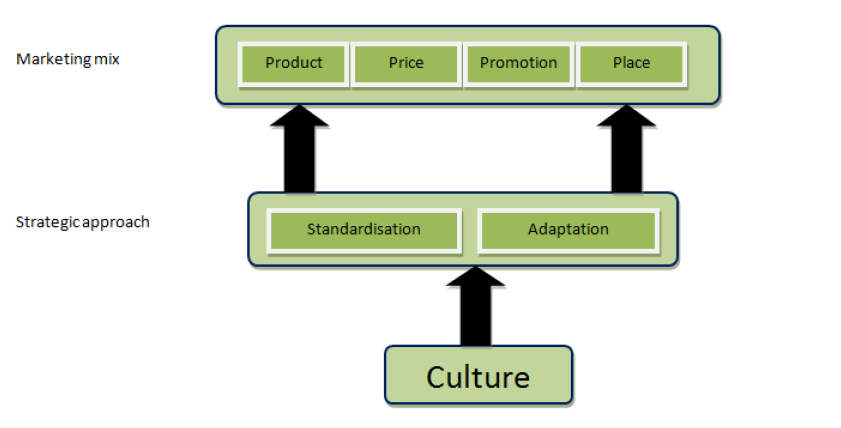
The Standardization marketing approach
According to Levitt (1983), the assumptions underlying global standardization are therefore two: the convergence of consumer behavior and the existence of global communities, sharing the same lifestyles across borders national. Standardization therefore consists in standardizing the marketing mix strategies company and use them for market penetration, regardless of its own local characteristics. More precisely, standardizing means offering the same produced all over the world, through the same distribution channels, at the same price, using the same promotional means. In fact, there is no strict one separation between standardization and adaptation, so the company can decide to standardize all four elements of the marketing mix, or just some of them.
The advantages deriving from such a marketing strategy are measured above all in economic and image terms: economies of scale, lower research and development costs, lower package design costs, lower promotion costs. A unique product for all markets certainly costs less than multiple variants of the same product adapted to the local tastes of different consumers. In terms of reputation, a global brand that markets its products in numerous countries manages to build a strong and consistent brand awareness between the different countries. The disadvantage of this strategy it is, essentially, the greater distance between the company and the consumer and the inability to adapt to local specificities.
The Localization marketing approach
The strategy opposed to standardization is adaptation, also known as localization. Localization consists in adapting the elements of the marketing mix to the needs of the individual markets in which the company decides to operate, therefore it is based on an in-depth study of the characteristics of the market and of consumers. Culture plays a fundamental role in this type of analysis dominant in the country and consumer purchasing habits. Adaptation, such as the standardization, may concern one or more elements of the marketing mix, according to market needs.
The advantages of greater conformity to tastes and specific market needs would lead to a greater competitive advantage and more sales. But while an adaptation to local needs might be of advantage in terms of sales, it would mean that the global company would need to support much more products. This, in turn will certainly also affect costs. Furthermore, adaptation strategy implemented at extreme scale may compromise core competitive advantage of a global brand causing disparity of image of the company.
Nespresso’s Case Study in Italy
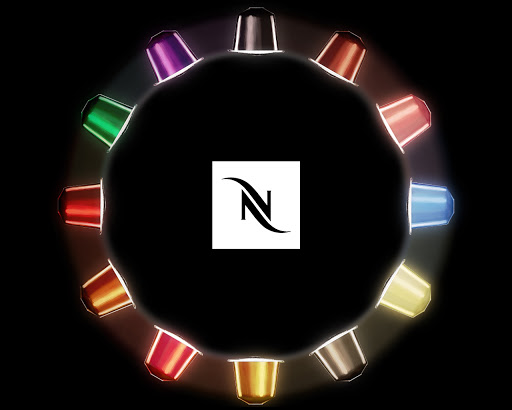
Nespresso is the brand of a capsule coffee distribution chain created in 1986 by the Swiss multinational Nestlé, a brand that has gained enormous popularity all over the world, including Italy.
The smart and well-constructed marketing strategy is the basis of Nespresso’s success. The approach adopted by the company is actually based – on the one hand – on the offering of a product designed as an innovative response to a universal need, and – on the other – on the development of a product designed to be global since its inception, that is, able to simultaneously satisfy the specific needs of buyers from different countries. Therefore, the challenge was to create a coffee that would become a world icon that would satisfy the desire to live a luxury experience every day. Every single detail of all the marketing linked to the Nespresso brand is played around this iconic concept of brand experience: perfection, pleasure, simplicity.
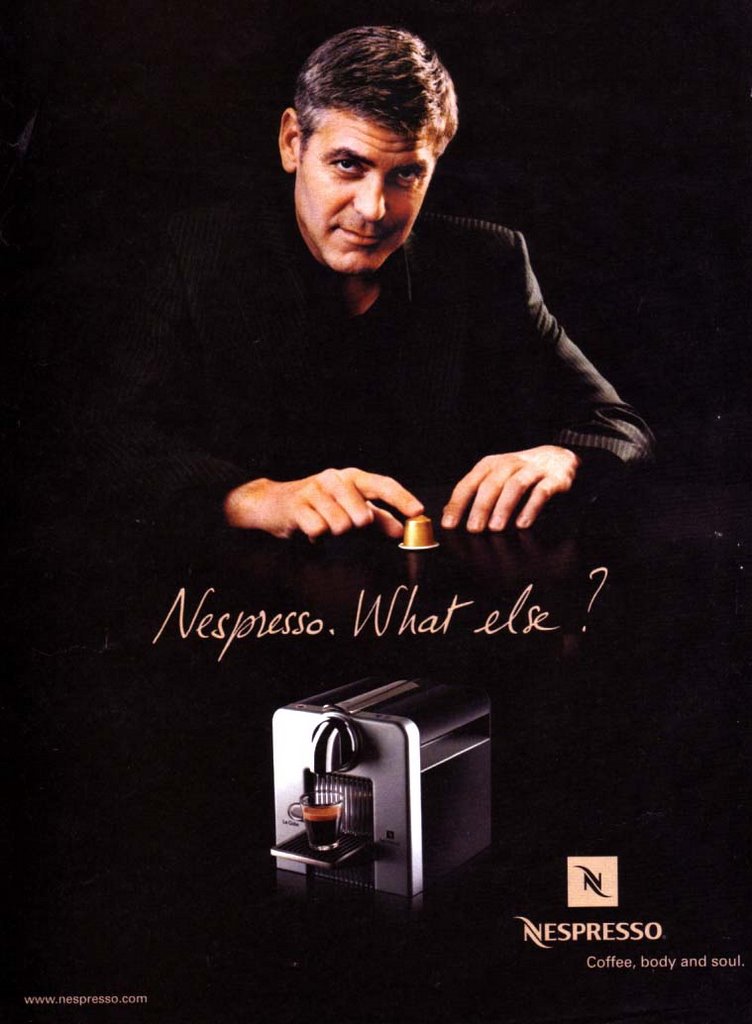
Figure 1
Nespresso was the first to introduce portioned coffee to the market. At the heart of this unique concept lies the Nespresso trilogy: the wide range of capsules, – which allow to satisfy every type of taste – the elegant espresso machines, and the Nespresso Club, with its exclusive personalized services.
These elements are the leitmotif of the Nespresso’s standardization marketing approach, which is particularly tangible in the What else? campaign, launched by the company in 2007 and become popular around the world through commercials and YouTube ads.
The first example is taken from the original campaign in English (Figure 1), the second is the message used in Italy (Figure. 2). From the first glance you can see how the company has chosen to adopt a standardized approach to advertising communication: although present in many different markets, the message has been almost identical from a linguistic and graphic point of view. The What Else? campaign was indeed originally conceived in English, then undergoing minimal linguistic adaptations before being exported to non-English speaking countries to ensure correct understanding the message. The claim in the two ads is the same: Nespresso. What else?
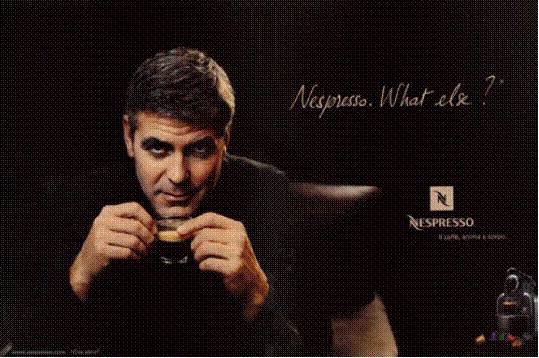
Figure 2
With the exception of the English advertisement, an asterisk associated with the claim refers to a note, where the translation into Italian is found – therefore What else? becomes Che altro? in Italy.
The same applies for the pay-off – or slogan: Coffee, body and soul is translated into Italian as Il caffè, anima e corpo. The use of the Italian definite article gives uniqueness and excellence to the brand.
Other common elements occur in the two examples: the presence of coffee machines and capsules, the same testimonial, the coffee brown color used both for the background and for the testimonial’s jacket.
The choice of the testimonial is not accidental: the world-famous actor, George Clooney, has a strong link with Italy – the undisputable homeland of the espresso, – where he spends a lot of time in his villas on Lake Como.
This example shows the standardized approach of the ‘Product’ and ‘Promotion’ elements of the marketing mix: the two YouTube advertisements promote the same product, but one is American and the other is dedicated to the Italian audience, albeit with a minimum linguistic approach to the consumer through the translation of claims and pay-offs for ensure its correct understanding – a translation that in any case accompanies the original message in English, without replacing it entirely. One of the reasons supporting this approach? The ad claim “Nespresso, what else?” has become so famous in Italy that it is now considered a unique product.
Domino’s Pizza Case Study in Italy*
Pizza. One of the best-known Italian words in the world. No wonder a great challenge for Domino’s Pizza, the largest American pizza delivery company in the world and already present in over 80 markets, was to sell pizza to Italians. A challenge almost impossible – combining tradition and innovation and conquering an important market – the Italian one – due to the consistent number of pizza consumption in Italy. Finally, Domino’s Pizza opened his first store in Italy in 2015.
Unlike that of Nespresso, the strategy adopted by Domino’s is based on offering products capable of satisfying segments similar to those of the source market in other countries. The localization marketing strategy is the reason for Domino’s success in Italy. After all, Domino’s Pizza’s adaptation marketing strategy has always been closely related to its customer’s tastes and customs.
Quality ingredients, excellent service and technological innovation are precisely the three strengths on which Domino’s Italia focuses. In order to penetrate the Italian market, quality cannot be ignored: to study and localize recipes, Domino’s Pizza started from the pizza dough – with fermentation time of at least 48 hours, so as to be highly digestible – and the choice of excellent raw materials – from the 100% Italian tomato sauce to the choice of some PDO (Protected Designation of Origin) products as buffalo mozzarella, Parma ham, Grana Padano and Gorgonzola. The second is the service, thanks to which Domino’s organization can guarantee speed and punctuality in the delivery of hot and tasty pizza. The third is technology by adding some innovative elements in the pizza delivery sector: the ability to order online, pay online or cash on delivery (both in cash and by debit cards), as well as to track the status of your order, to save your order for future orders.
Domino’s follows a partial structure of 4 Ps’, implemented through the web content localization.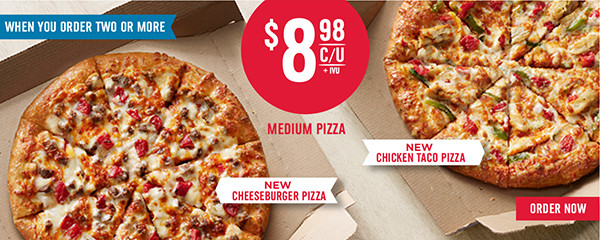
The American website (see figure on the right) shows images of pizza that are prepared to meet the tastes and preferences of Americans, but that might be unusual for an Italian consumer.
In the Italian website, ‘Product’ is adapted to the local taste. Inclusion of Pizza choices like “Emiliana”, “Dolomitica” and “Mantovana” (see figure below) confirms the adaptation of Dominos’ products to invade Italian hearts through the collaboration with Italian chef Marco Valletta. Also, the pizza toppings available in Italy – like the Mantovana pumpkin cream – are chosen to fit the tastes of the inhabitants. In a nutshell, in Domino’s Italian stores, half of all available products available are localized.
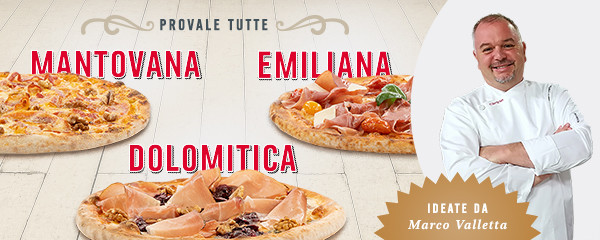
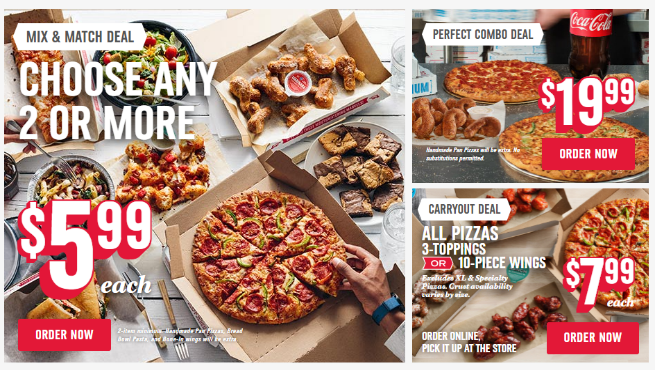 For the ‘Pricing’ element – While Domino’s America (see figure on the left) adopts the approach of offering several discount coupons to attract its customers, Domino’s Italy (see figure on the below) implemented a strategy that overshadows the price in the landing page, focusing instead on the quality of the product. For the ‘Place’ element, Domino’s Italia prefers a location in big cities and highly populated areas such as Milan, Rome, Turin and Bologna.
For the ‘Pricing’ element – While Domino’s America (see figure on the left) adopts the approach of offering several discount coupons to attract its customers, Domino’s Italy (see figure on the below) implemented a strategy that overshadows the price in the landing page, focusing instead on the quality of the product. For the ‘Place’ element, Domino’s Italia prefers a location in big cities and highly populated areas such as Milan, Rome, Turin and Bologna.
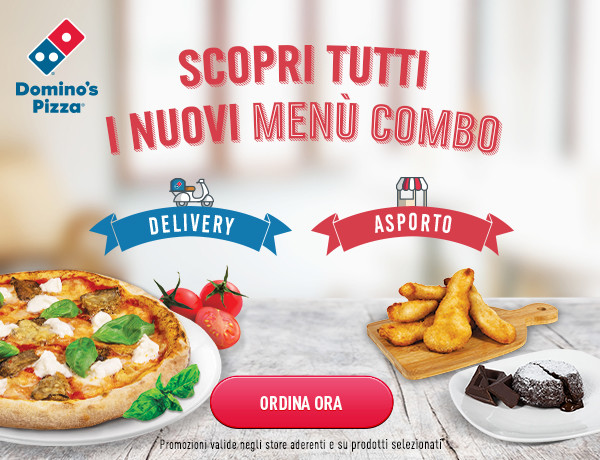
However, for the ‘Promotional’ element, both Domino’s America and Italia share a similar approach of offering several discount coupons to attract its customers.
By the strategies adopted by Domino’s regarding the localization of almost all marketing mix elements not only did its sales doubled, but it was able to compete against other global brands. Although an initial skepticism has been encountered in Italy, Domino’s has a reputable name for its services and the quick delivery it offers to its customers now.
Conclusion
Based on the examples of Nespresso and Domino’s Pizza, it is apparent that both standardization and localization can be successful in the implementation of a global branding strategy. Considering that the choice between adaptation and standardization is driven by the trade-off between cutting costs and meeting local consumers’ need, the two case studies investigated show there is no better approach than the other as they both present advantages and disadvantages, and that in reality, almost none marketing mix element is totally standardized or adapted. In the case of Nespresso, the analysis of the English and Italian YouTube ad showed how the strength of the brand is based on its universal appeal to a shared behaviour and lifestyle among consumers. Thus, the company appropriately chose to present a consistent brand image throughout the world. In the case of Domino’s Pizza, through the web content analysis, a new target customer arose, which required a unique, targeted approach. The company accordingly chose to adopt a more localized strategy, which allowed it to customize its services and products offering for the Italian customer. In both cases, the success of the branding strategy is contingent on the company’s accurate appraisal of its customers’ desires and the brand’s fit with these consumer demands.
I highly recommend this course to all those who want not only to know more on the localization strategies and techniques, but also to broaden their localization knowledge applied to the marketing world. An effective, engaging and professional course!
Keegan, J.K. & Green, S.M. (1999). Global Marketing – 2nd edition. USA.
Levitt, T. (1983), “The Globalization of Markets”. Harvard Business Review
www.digitalflow.it/marketing-nespresso/
www.comunicaffe.it/business-model-la-strategia-di-nespresso-per-diventare-lapple-del-caffe/
www.comunicaffe.it/nespresso-brand/
www.cupcaketeam75.wordpress.com/
www.ninjamarketing.it/2015/10/26/dominos-pizza-in-italia-alessandro-lazzaroni/
* Note: This piece analyzes Domino’s Pizza’s marketing strategy during its 7 years of operation in Italy, prior to its closure in late July 2022.
Disclaimer: Copyright © 2021 The Localization Institute. All rights reserved. This document and translations of it may be copied and furnished to others, and derivative works that comment on or otherwise explain it or assist in its implementation may be prepared, copied, published, and distributed, in whole or in part, without restriction of any kind, provided that the above copyright notice and this section are included on all such copies and derivative works. However, this document itself may not be modified in any way, including by removing the copyright notice or references to The Localization Institute, without the permission of the copyright owners. This document and the information contained herein is provided on an “AS IS” basis and THE LOCALIZATION INSTITUTE DISCLAIMS ALL WARRANTIES, EXPRESS OR IMPLIED, INCLUDING BUT NOT LIMITED TO ANY WARRANTY THAT THE USE OF THE INFORMATION HEREIN WILL NOT INFRINGE ANY OWNERSHIP RIGHTS OR ANY IMPLIED WARRANTIES OF MERCHANTABILITY OR FITNESS FOR A PARTICULAR PURPOSE.


